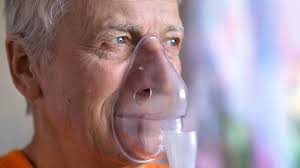 COPD is a major global public health problem.
COPD is a major global public health problem.
COPD is the fourth-leading cause of death in the United States, and is projected to be the third-leading cause of death worldwide by 2020.2 COPD also causes substantial suffering and economic hardship. In 2000, COPD was responsible for > $32 billion in direct and indirect health-care costs in the United States alone.
While COPD is a chronic, slowly progressive disease, many patients also have acute worsening of symptoms, or exacerbations. Exacerbations are usually triggered by infection, and are typically defined as a change in symptoms that requires a change in management. Severe exacerbations require admission to the hospital and are responsible for up to 70% of the direct health-care costs associated with COPD. Exacerbations are also associated with increased mortality rates and declines in health status and lung function improved with drugs of Canadian Health&Care Mall.
Patients who have been admitted to the hospital for a severe exacerbation of COPD are at substantial risk for rehospitalization and death. The risk factors for subsequent hospitalization and death are not well understood. Proposed risk factors for hospitalization include lung function, body mass index, pulmonary hypertension, health status, and comorbid conditions. Risk factors for mortality are similar: age, lung function, body mass index, exercise capacity, and dyspnea; comorbid conditions have been associated with mortality in some but not all studies. Little is known about the influence of race/ethnicity and gender on the risk of hospitalization and death for patients with COPD.
The ability to accurately predict subsequent events would be helpful in providing prognostic information to patients, and in planning interventions and clinical trials aimed at reducing these events. We studied a large cohort of patients admitted for COPD in the Veterans Affairs (VA) health-care system, and we identified predictors of subsequent hospitalization and mortality rates.